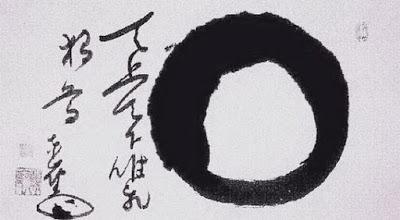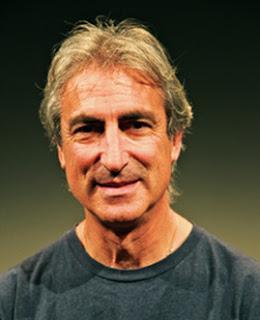
Enso by Torei Enji
I recently discovered in my files an interview I did with Richard Rosen in 2008 for a book I never wrote that was going to be all about Savasana (great idea, right?). As he always does, Richard had some wonderful things to say, so with his permission, I’m going to share them with you today. Because my questions weren’t particularly compelling and what Richard said was so beautiful, I’ve edited and reorganized the interview at tiny bit so it reads as a single statement. Thank you, Richard. —NinaIn my early years as a yoga student, I really didn’t understand Savasana, I thought it was a waste of time. I sort of tended to either cut it short or skip it completely. And I think a lot of classes—a lot of teachers—still tend to do that. They don’t really give time to Savasana in their classes. As I got older as a yoga student I began to appreciate the value of the practice at the end of a yoga session, and I spent 15 to 20 minutes in Savasana at the end of a practice, which is a good chunk of time relative to the rest of my practice.
Teachers want you to feel like you’re doing something. And a lot of people don’t understand or appreciate the value of not doing. But a lot of traditional yoga is just that. The idea is that you’re already doing something that is interfering with your self awareness, your self understanding. And that rather than doing something to fix it, what’s really necessary is to undo what’s getting in the way, which means a need for a surrender, a letting go. To a certain extent that’s what you get a taste of in Savasana. It’s just stopping doing, and letting what’s being interfered with come out.
What comes out for me is, like Popeye says, “I am what I am.” I just get a feeling that I’m closer to myself. At my stage of yoga development, I feel very keenly that there’s a separation, that I don’t really know who or what I truly am, and that when I perform Savasana well that I get a clearer sense of the underlying truth of myself, the underlying being.
It’s a contrast to the way I usually feel, which is sort of there’s a lot going on in my head and I’m not exactly aware of the present, I’m not connected to the sounds around me, I’m not connected my breath, I’m connected to anything that’s really happening in the moment. There’s always a distraction of some kind. I’m thinking about this or that. I’m thinking about what I have to do. And so there’s a lack of presence. Whereas the experience of Savasana is a clearing away of all of that static. Like in the old days when the analog radios would have dial—a little bar that would move up a down a range of stations—and you would turn it. In between stations you would get a hissing sound, and as you approached a station the music or sound would come in more clearly. I also think of yoga asanas as being like tuners, where as you approach the essence of the pose, say, the static begins to diminish.
I think there’s a lot of static in the brain that interferes with your connections to your surroundings. It’s a distraction in a way. It’s like you’re trying to concentrate on something and somebody’s playing music outside. It takes you away from the direct perception of what’s going on. In Savasana, at least momentarily, that’s turned down, quieted. So I think the way I would describe my experience of a well-performed Savasana is that the dial gets a little bit closer to where the station actually is and the interference goes away and the music of the self comes in more clearly.
When I come out of a well-performed Savasana, I feel very quiet. My senses are more receptive. I feel more expansive. I feel bigger. Physically I feel taller. And when I walk out of my practice room after a well-performed Savasana, I feel more in tune with my surroundings. Colors are brighter. Sounds are clearer. I feel more alive.

Subscribe to Yoga for Healthy Aging by Email ° Follow Yoga for Healthy Aging on Facebook ° Join this site with Google Friend Connect

